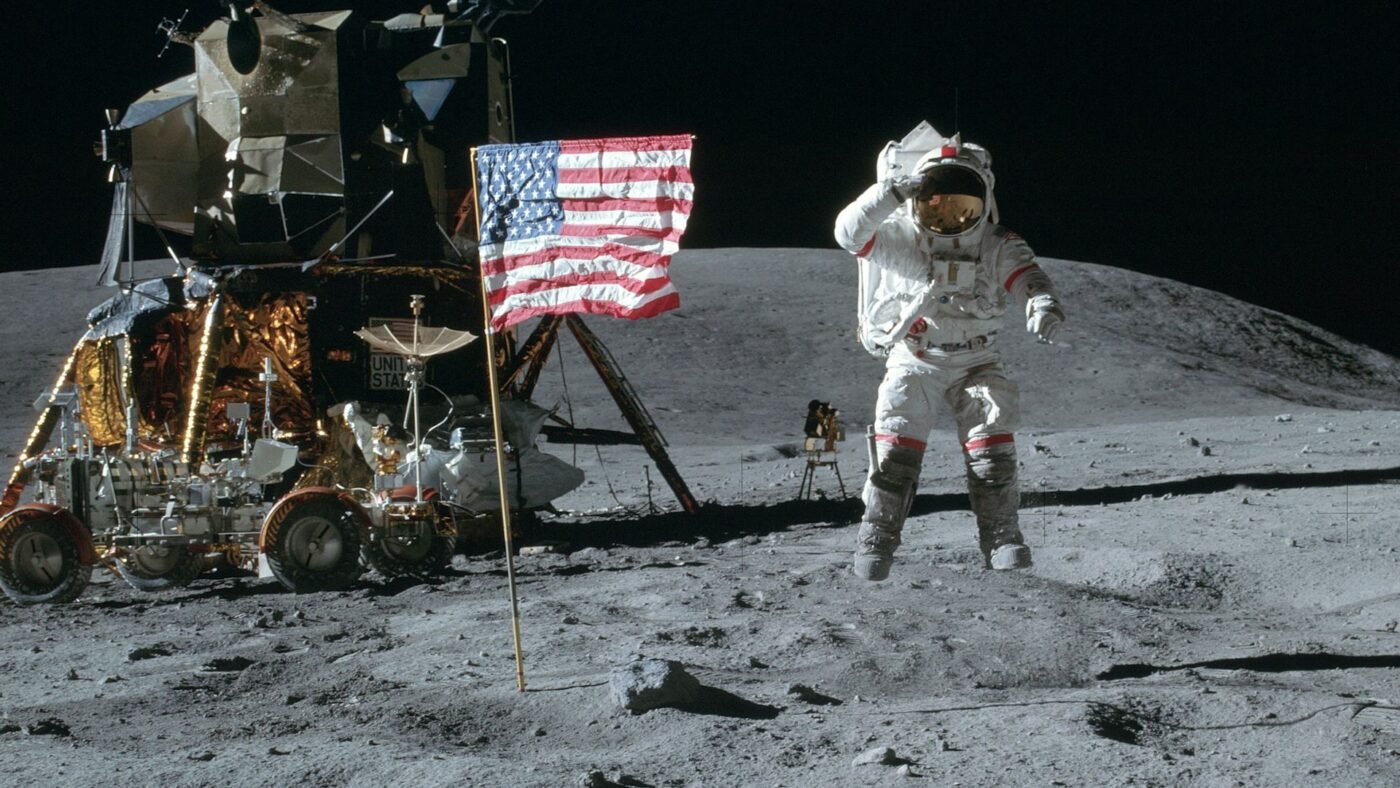History, Space Exploration, Unkown History
When NASA Accidentally Taped Over the Moon Landing: A Storage Mix-Up of Epic Proportions
The Historic Apollo 11 Moon Landing
The Apollo 11 mission, launched on July 16, 1969, marked a turning point in human exploration and is celebrated as the first successful manned moon landing. This historic event was not only a triumph of engineering and technology but also a defining moment in the Cold War-era competition between the United States and the Soviet Union. The mission was comprised of three astronauts: Neil Armstrong, Buzz Aldrin, and Michael Collins. Each played a crucial role, with Armstrong and Aldrin becoming the first humans to set foot on the lunar surface, while Collins remained in orbit aboard the Command Module, Columbia.
Upon reaching the moon, the Lunar Module, known as Eagle, separated from the Columbia, descending into the Sea of Tranquility. Neil Armstrong famously related the moment he stepped onto the lunar surface, stating, “That’s one small step for man, one giant leap for mankind.” This profound declaration underscored the mission’s significance, as it symbolized the culmination of years of rigorous scientific research and technological innovation. The live broadcast of this event captivated millions around the globe, igniting a sense of unity and inspiration among viewers, which resonated profoundly in an era characterized by social upheaval and political tensions.
The technological advancements achieved through the Apollo 11 program have had lasting impacts on various fields, including telecommunications, materials science, and computer technology. Furthermore, the successful moon landing cemented the United States’ lead in space exploration and paved the way for future missions beyond Earth’s orbit. The footage recorded during this mission not only documented a pivotal moment in history, but its preservation remains critical to understanding the technological prowess and human spirit that characterized this monumental endeavor. The Apollo 11 mission undoubtedly serves as a landmark achievement in both the history of exploration and our quest to comprehend our place in the universe.

The Misplaced Tapes: How It Happened
The accidental erasure of the original Apollo 11 moon landing recordings is a significant event in the history of NASA and space exploration. The incident unfolded during a time when the agency was grappling with considerable challenges related to data storage and management. In the late 1960s and early 1970s, as NASA transitioned from the excitement of the Apollo missions to the planning stages for the Space Shuttle program, it faced immense pressure to effectively manage its vast archives. Unfortunately, this chaotic environment contributed hugely to the eventual mishandling of the lunar mission tapes.
During this period, NASA’s approach to archival storage was not as sophisticated as it is today. The organization had accumulated massive amounts of data, including video recordings, telemetry, and other scientific information recorded during the lunar missions. The sheer volume of materials made it difficult for employees to systematically catalog and retrieve these assets. Furthermore, there was a prevailing cultural attitude within the agency at the time that often underestimated the importance of preserving archival materials. Many assumed that the original tapes were of limited value after they had served their immediate purpose in broadcasting the moon landing, leading to decisions that would ultimately prove to be regrettable.
In a bid to save space and streamline storage, the original tapes of the Apollo 11 moon landing were unknowingly reused for newer recordings. The process of reusing magnetic data tapes was not uncommon in the 1970s, as organizations sought to manage resources with limited budgetary constraints. Tragically, this storage mix-up meant that the unrepeatable moment of humankind’s first footsteps on the moon was lost forever, a decision that continues to evoke debate among historians and enthusiasts alike. The accidental erasure highlights the necessity for careful management and preservation of vital historical records in any scientific organization.

The Aftermath: What Was Lost and What Remains
The loss of the original moon landing footage represents a significant setback in the preservation of one of humanity’s most monumental achievements. The Apollo 11 mission, which successfully landed humans on the moon in July 1969, was meticulously documented. However, in a baffling turn of events, these original tapes ended up being overwritten and lost, leaving historians and scientists grappling with the impacts of this storage mix-up. The erasure of such key evidence not only hinders scholarly research but also alters the public’s perception of the Apollo program.
Despite the loss of the original footage, various surviving copies have provided some solace. For instance, the broadcasts and secondary recordings captured during the live transmission have allowed some analysis of the event. These materials, albeit not of the original quality, still hold historical significance and serve as valuable resources for understanding this pivotal moment in space exploration. Moreover, efforts are ongoing to restore and digitally enhance these recordings to provide clearer images and sounds that bring the moon landing back to life for future generations.
In light of this incident, it has become paramount to emphasize the importance of archiving historical documents. This event serves as a reminder of our vulnerabilities in preserving vital cultural artifacts. Organizations such as NASA are now focusing on improving their archival practices to prevent similar losses. The lessons learned from this storage mix-up will inform future strategies for safeguarding historical records, ensuring that crucial elements of our shared past, including events as significant as the Apollo moon landing, are meticulously preserved for posterity.

Lessons for the Future: Archiving and Preservation in the Digital Age
The Apollo 11 tape incident serves as a profound lesson for contemporary practices surrounding archiving and data preservation. As we navigate the complexities of the digital age, the importance of preserving historical records and ensuring their accessibility for future generations cannot be overstated. In light of the mistakes made during the storage of vital materials from the moon landing, institutions across various sectors are re-evaluating their archival strategies and practices.
Today, technological advancements in digital formats have revolutionized the way we approach data preservation. Digital archiving not only allows for a more efficient storage system but also increases the longevity of data. Various formats such as PDFs, JPEGs, and MP4s have made it easier to store vast amounts of information without worrying about degradation or physical damage often associated with traditional media. However, transitioning to digital formats raises new challenges, including issues of file obsolescence and the necessity for regular data migrations to prevent data loss.
Furthermore, the Apollo 11 incident underscores the need for robust management frameworks within archival institutions. Institutions should develop and implement comprehensive policies that emphasize the importance of both physical and digital preservation, ensuring that data is correctly categorized and securely stored. Regular audits of these archives can help institutions identify potential vulnerabilities while also promoting a culture of accountability among staff handling these irreplaceable records.
Ultimately, fostering collaboration among archivists, historians, and technology specialists is crucial for the ongoing evolution of preservation strategies. As we move forward, embracing innovative technologies and methodologies will be essential in safeguarding our collective history and preventing instances like the accidental erasure of the moon landing data.
Science and Math
Food and Coffee
Funny and Sarcastic

















